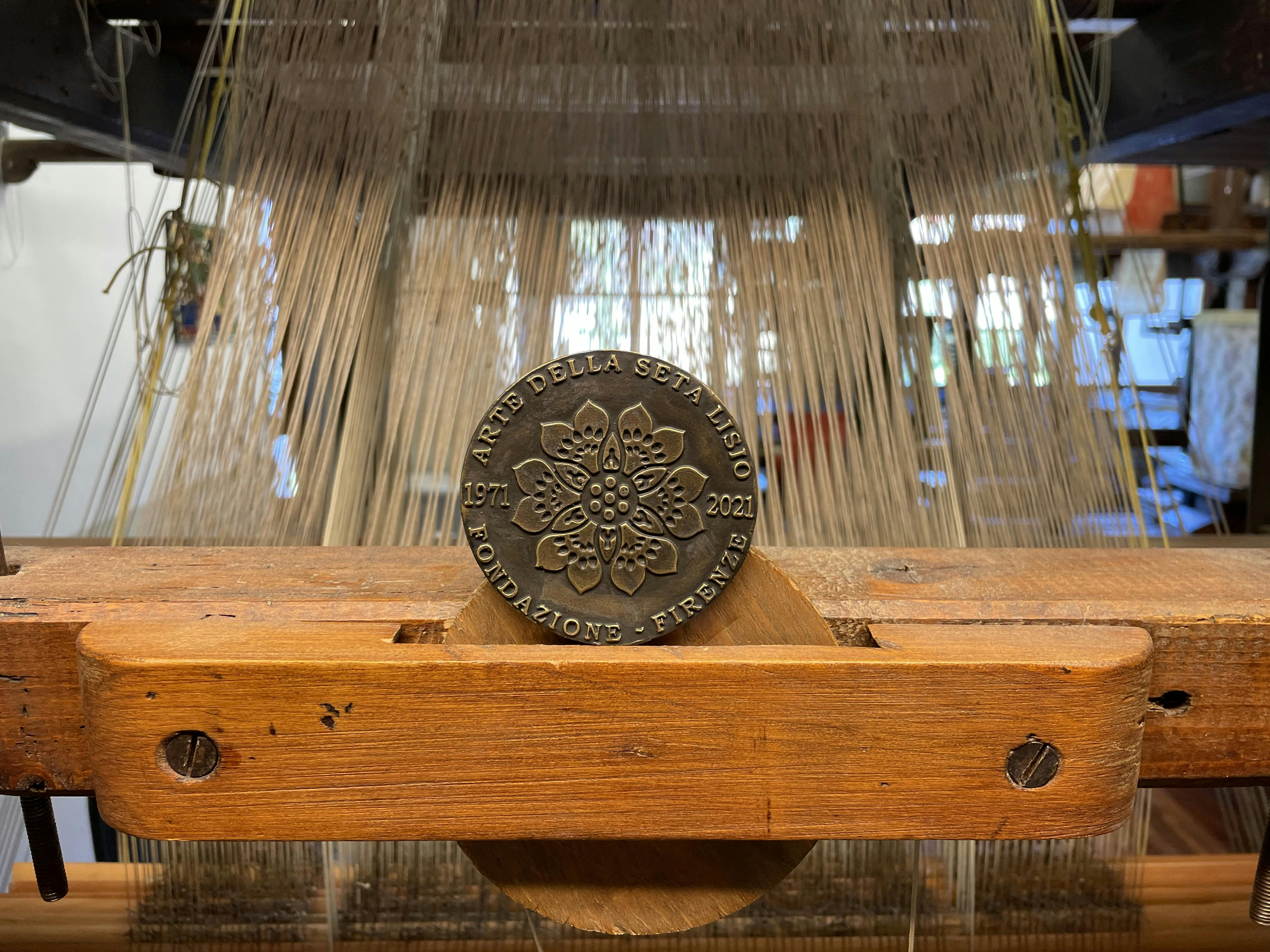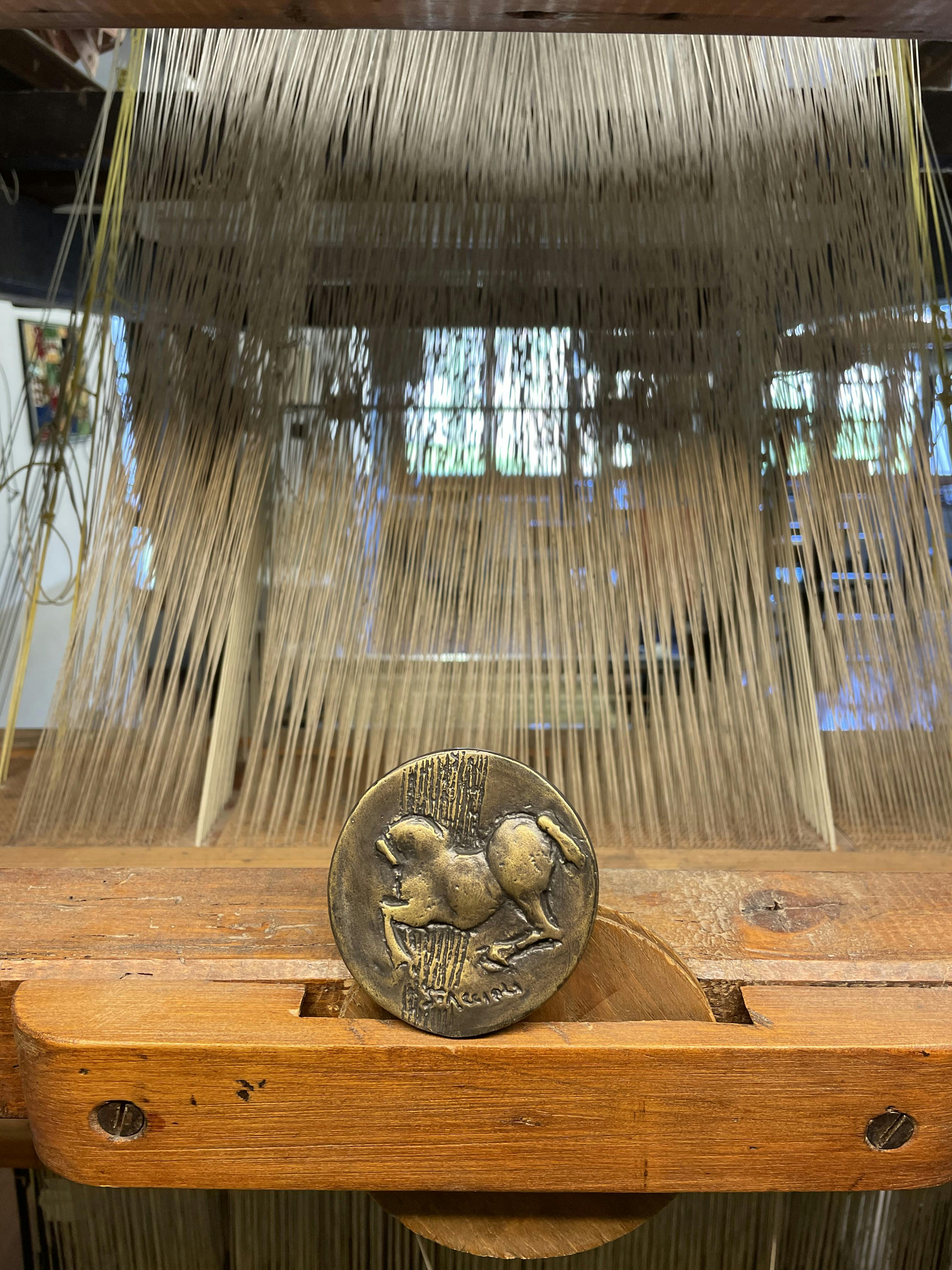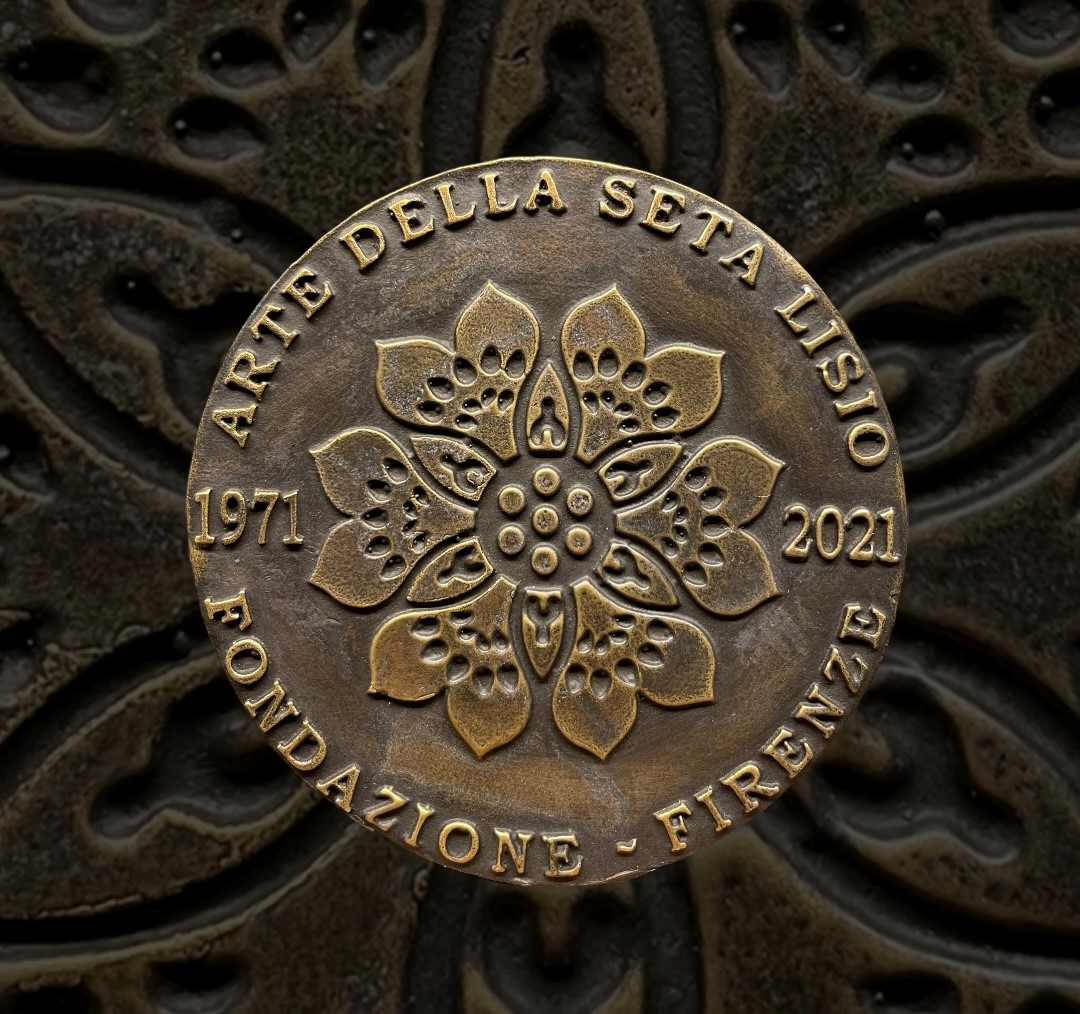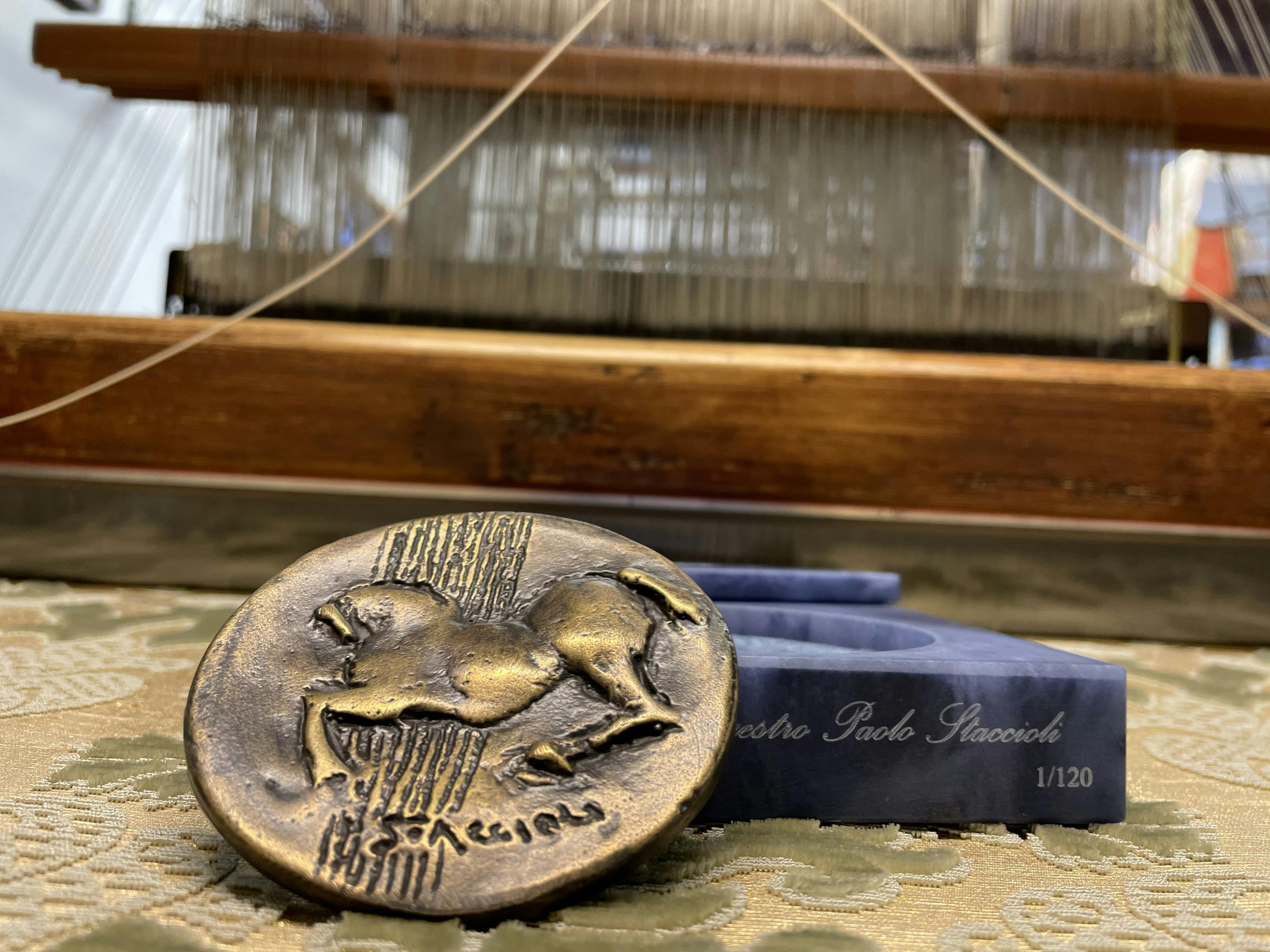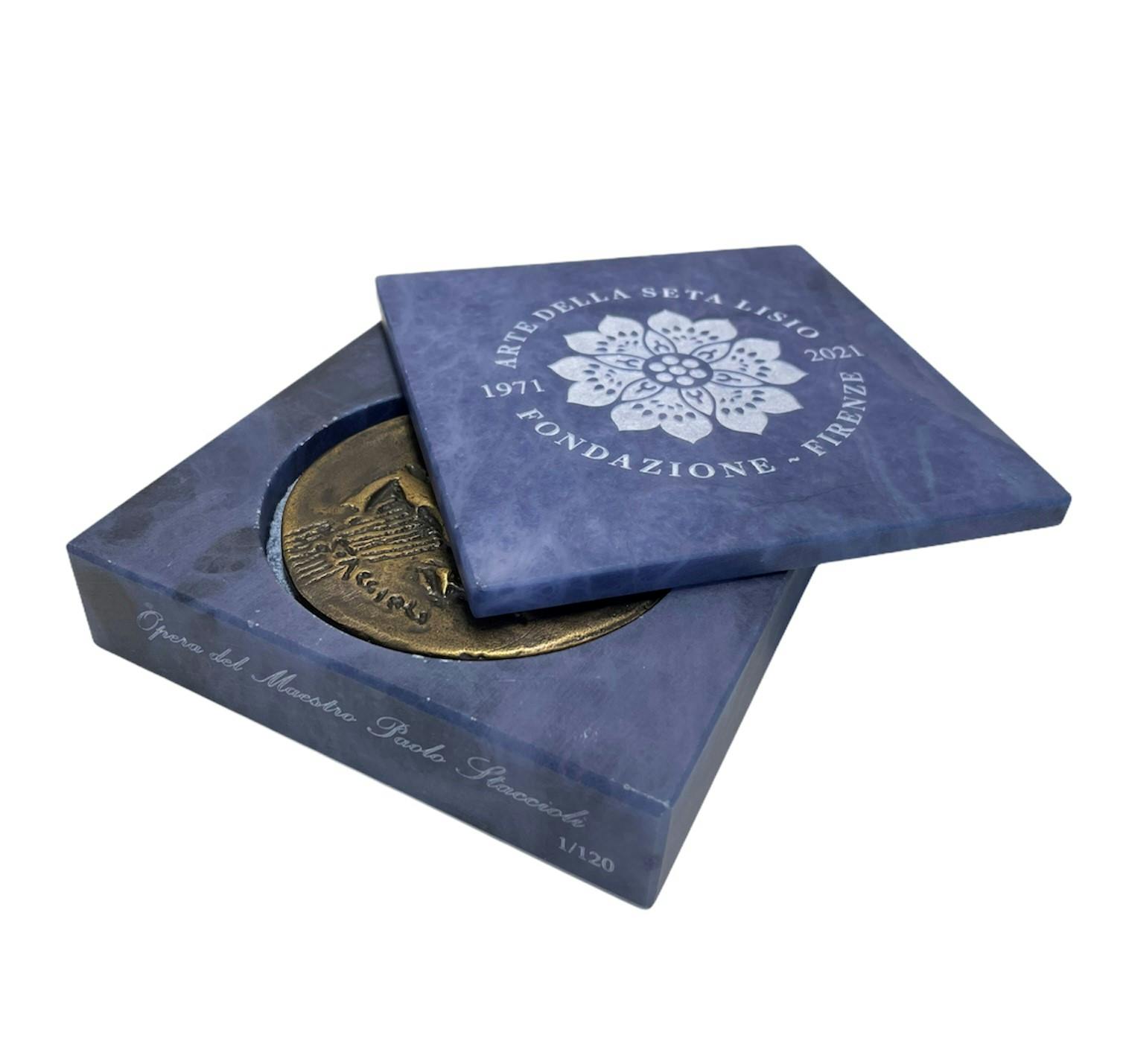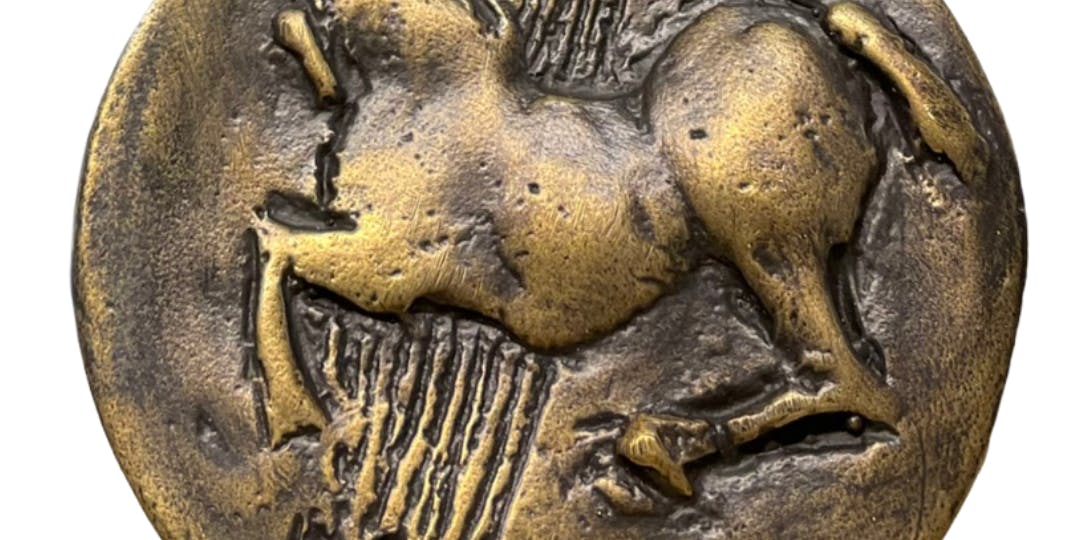
Celebrating Fondazione Arte della Seta Lisio’s 50 Years with a Limited Edition Bronze Medal
Fifty Years of Fondazione Lisio: 1971
1971-2021. Fondazione Arte della Seta Lisio Celebrates 50 Years
Founded by a forward-looking Fidalma Lisio, who made it her mission to continue her father’s work and at the same time to raise a bulwark in defence of the textile arts and to ensure that they would be handed down to the new generations, Fondazione Lisio is now celebrating an important milestone in its history as an institution unique in its genre.
To second our desire that the memory of this anniversary should live on in time, we struck an agreement with Maestro Paolo Staccioli to create a bronze work that could merge his art, so firmly rooted in ancient processes and courtly traditions, with ours – which likewise draws its strength from the past and which, in the present, finds the resilience to transmit its values to the future.
In times as fraught for humanity as these, we would celebrate our roots and acknowledge our life force while simultaneously reaffirming our will to persevere, strong in the awareness of our moral duty and the responsibilities we have taken on toward the new generations.
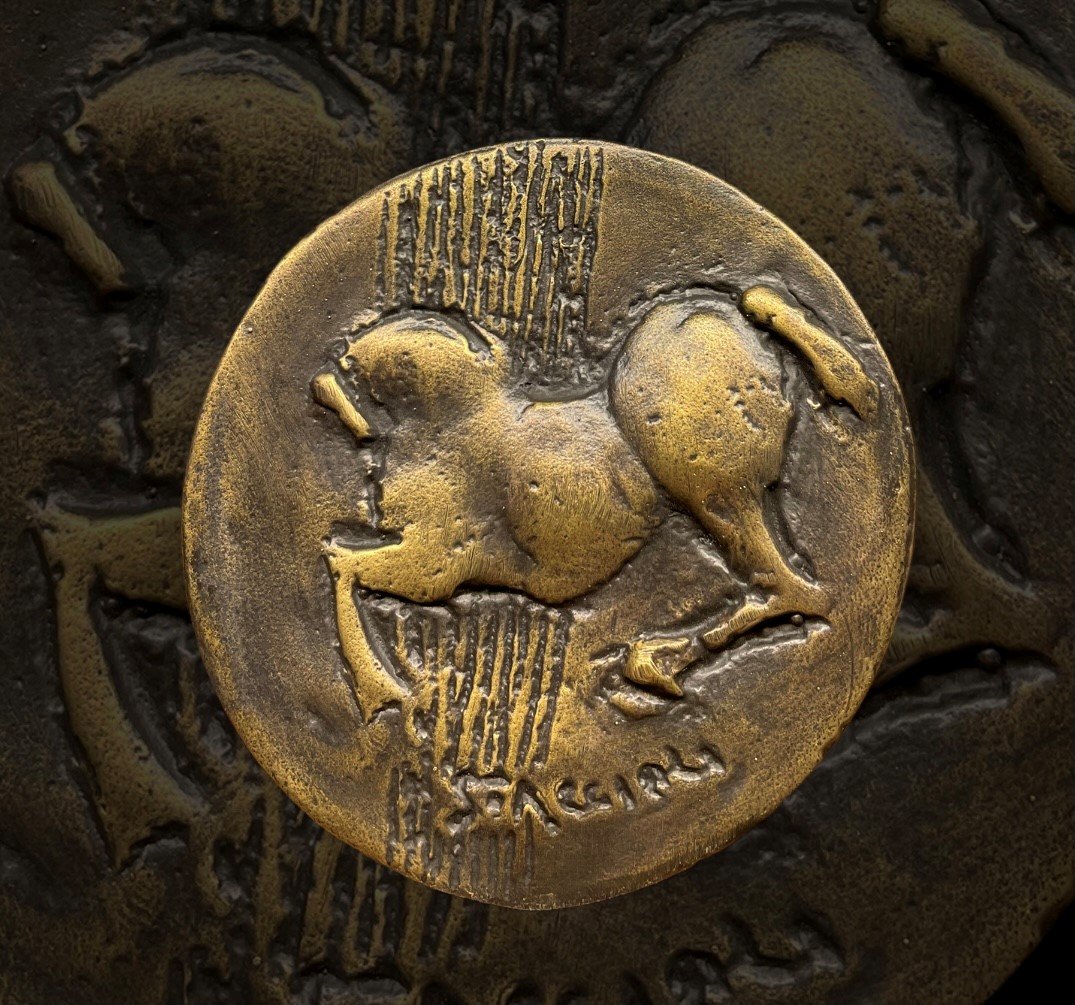
The reverse is an original work by Maestro Paolo Staccioli, a horse dancing on silken warp threads tensioned on an ancient loom. Signed by the artist at the bottom.
The obverse presents the flower that was the emblem of the Medici family, the decorative element, dating to the second half of the 15th century, taken as inspiration by Giuseppe Lisio for his ‘Mediceo’ polychrome voided velvet; the official logo of Fondazione Arte della Seta Lisio; and the anniversary dates, 1971 and 2021.
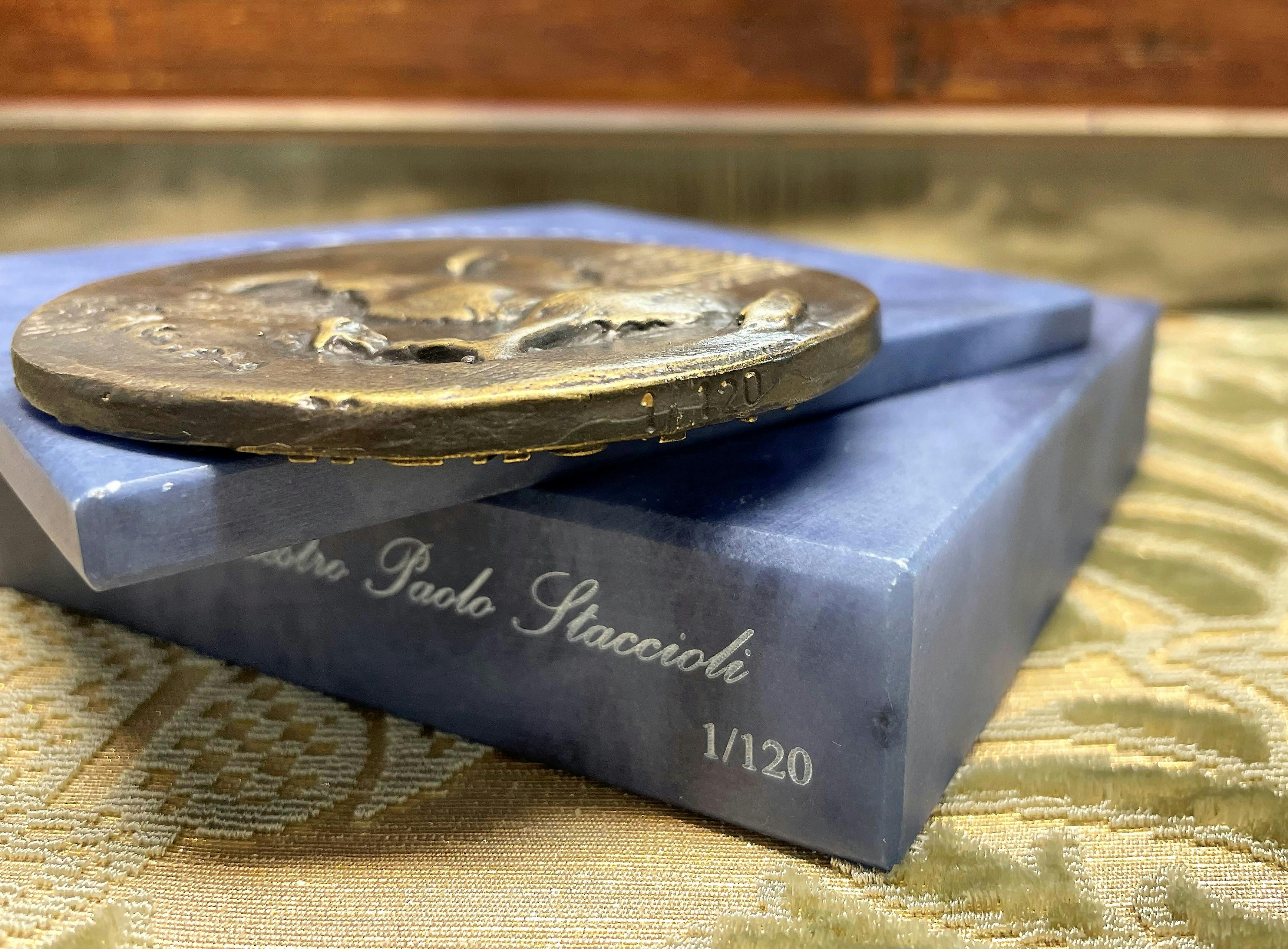
How to Support our Foundation
How to Support our Foundation
A contribution to valorising the textile arts
By making a donation you will be supporting the activities of Fondazione Arte della Seta Lisio, promoting the art of hand-weaving and other textile arts, and helping to guarantee that our library and historical archives remain open to the public, as well as funding local development projects and cultural programmes.
The medals are numbered from 1 to 120 on the work itself and on the box. The minimum donation for receiving the bronze medal is € 100,00.
A Thought from our President
‘a covenant of love that has endured unaltered for fifty years’
‘ The year 2021 is a point of arrival – or better, an all-important milestone – for Fondazione Lisio: its “Golden Anniversary”. covenant of love for fabrics in silk and gold and silver and the unique art of weaving them, by hand, with a master’s touch. An arrangement that has endured unaltered for fifty years and which, today, merits celebration in an equally lasting manner, with a splendid commemorative medal that can double as a good luck charm as we face the difficult challenges of tomorrow.
In the present, my heartfelt and grateful thoughts fly to the late Fidalma Lisio, who in 1971 – spurred by her unconditional love for the superb silk velvets and brocades created by her father Giuseppe beginning in 1906 – decided that the time had come to “name an heir”. She was not blessed with children of her own but more than anything in life wanted to be able to hand down a sublime, ancient art to future generations and to not scatter one thread of a cultural and technical legacy which by that time was truly unique in the world. And so the Fondazione Lisio was born.
Although times were not always easy, her dream has endured through the present. In today’s dire situation, we cannot and must not let our guard down; instead, we must allow ourselves to be guided by the farsightedness and clear vision of Fondazione Lisio’s founder – a woman of unparalleled humanity – who believed that our institution, as it continues to pursue all its many aims, must remain a “place where the artisan manufacturing process is carried on creatively, with full respect for the human person, in a vision of communal Christian living in which each individual commits to furthering the wellbeing of his fellows – and in particular of the “least” of them.’
Francesco Ortona
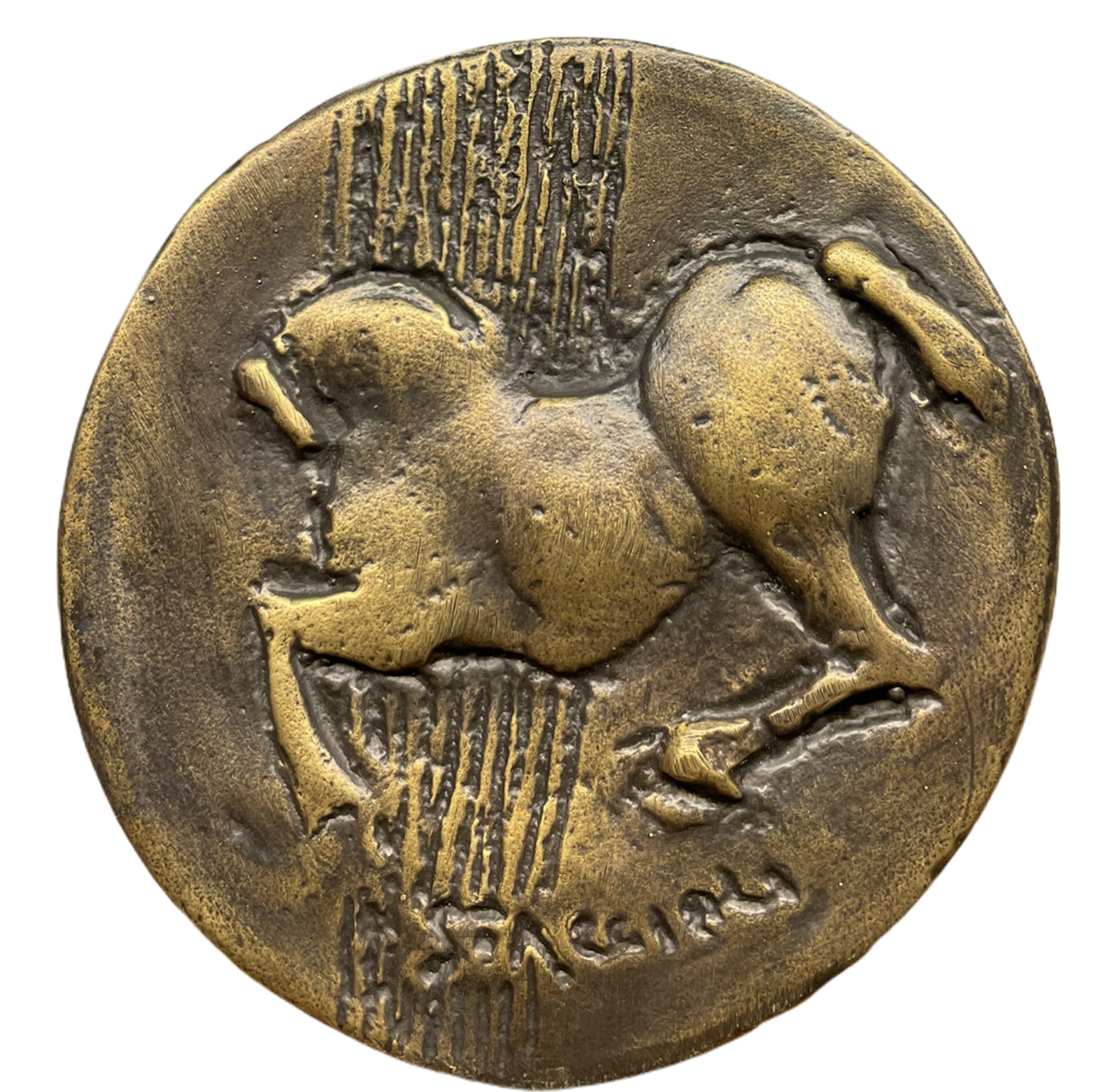
The horse, since antiquity a symbol of strength and beauty, rises to the status of symbol of resilience, of propulsive force driving us forward toward new growth horizons, toward new ways of meeting adversity and overcoming our difficulties.
----------------------
DATA SHEET
Author: Maestro Paolo Staccioli
Year of production: 2020
Dimensions: Ø 8.5 cm
Weight: ca. 172 g
Material: patinated bronze
Technique: lost-wax casting
Foundry: Fonderia Art'u' di Gaetano Salmista
Alabaster box: Pietra degli Dei, Alabastri Ducceschi
Limited edition: 120 numbered pieces
Release date: 21 January 2021
THE ANCIENT ART OF LOST-WAX CASTING
A cast was made of the original clay model sculpted by Maestro Staccioli; this mould was in turn used to produce an exact wax copy of the model.
The wax pattern was then covered with refractory material to obtain the casting mould; as it was fired, the wax evaporated, leaving an exact negative mould ready to receive the molten bronze.
After the bronze was poured, the refractory material was removed. The work was then finished by roughing, polishing, chiselling, pickling and patination, all to the highest standards.
The Artist: Maestro Paolo Staccioli
I had occasion to make the acquaintance of Fondazione Arte della Seta Lisio on the eve of its 50th anniversary, when I discovered a special place and a special group of people who for many years now have been working with great commitment and enormous dedication to keep alive and hand down the art of hand weaving.
So it was with great pleasure and enthusiasm that I accepted the Fondazione’s proposal to create a medal to celebrate these fifty years of its history. I immediately decided to propose an image which could express the points of union between our separate arts, mine and that of the Fondazione: a horse dancing on silken warp threads tensioned on an ancient loom.
The horse has always been an inspiring icon for me and has accompanied my career in art from the start. For this reason, it is a fitting image to represent my love for art, for all the arts, a love which Fondazione Arte della Seta Lisio unreservedly shares.
Paolo Staccioli - www.paolostaccioli.it
